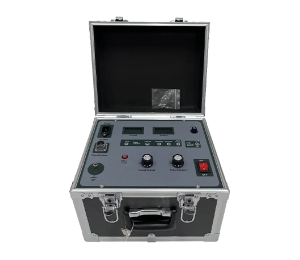 English
English



-
 Afrikaans
Afrikaans -
 Albanian
Albanian -
 Amharic
Amharic -
 Arabic
Arabic -
 Armenian
Armenian -
 Azerbaijani
Azerbaijani -
 Basque
Basque -
 Belarusian
Belarusian -
 Bengali
Bengali -
 Bosnian
Bosnian -
 Bulgarian
Bulgarian -
 Catalan
Catalan -
 Cebuano
Cebuano -
 China
China -
 China (Taiwan)
China (Taiwan) -
 Corsican
Corsican -
 Croatian
Croatian -
 Czech
Czech -
 Danish
Danish -
 Dutch
Dutch -
 English
English -
 Esperanto
Esperanto -
 Estonian
Estonian -
 Finnish
Finnish -
 French
French -
 Frisian
Frisian -
 Galician
Galician -
 Georgian
Georgian -
 German
German -
 Greek
Greek -
 Gujarati
Gujarati -
 Haitian Creole
Haitian Creole -
 hausa
hausa -
 hawaiian
hawaiian -
 Hebrew
Hebrew -
 Hindi
Hindi -
 Miao
Miao -
 Hungarian
Hungarian -
 Icelandic
Icelandic -
 igbo
igbo -
 Indonesian
Indonesian -
 irish
irish -
 Italian
Italian -
 Japanese
Japanese -
 Javanese
Javanese -
 Kannada
Kannada -
 kazakh
kazakh -
 Khmer
Khmer -
 Rwandese
Rwandese -
 Korean
Korean -
 Kurdish
Kurdish -
 Kyrgyz
Kyrgyz -
 Lao
Lao -
 Latin
Latin -
 Latvian
Latvian -
 Lithuanian
Lithuanian -
 Luxembourgish
Luxembourgish -
 Macedonian
Macedonian -
 Malgashi
Malgashi -
 Malay
Malay -
 Malayalam
Malayalam -
 Maltese
Maltese -
 Maori
Maori -
 Marathi
Marathi -
 Mongolian
Mongolian -
 Myanmar
Myanmar -
 Nepali
Nepali -
 Norwegian
Norwegian -
 Norwegian
Norwegian -
 Occitan
Occitan -
 Pashto
Pashto -
 Persian
Persian -
 Polish
Polish -
 Portuguese
Portuguese -
 Punjabi
Punjabi -
 Romanian
Romanian -
 Russian
Russian -
 Samoan
Samoan -
 Scottish Gaelic
Scottish Gaelic -
 Serbian
Serbian -
 Sesotho
Sesotho -
 Shona
Shona -
 Sindhi
Sindhi -
 Sinhala
Sinhala -
 Slovak
Slovak -
 Slovenian
Slovenian -
 Somali
Somali -
 Spanish
Spanish -
 Sundanese
Sundanese -
 Swahili
Swahili -
 Swedish
Swedish -
 Tagalog
Tagalog -
 Tajik
Tajik -
 Tamil
Tamil -
 Tatar
Tatar -
 Telugu
Telugu -
 Thai
Thai -
 Turkish
Turkish -
 Turkmen
Turkmen -
 Ukrainian
Ukrainian -
 Urdu
Urdu -
 Uighur
Uighur -
 Uzbek
Uzbek -
 Vietnamese
Vietnamese -
 Welsh
Welsh -
 Bantu
Bantu -
 Yiddish
Yiddish -
 Yoruba
Yoruba -
 Zulu
Zulu
acsd test transformer
The Role of ACSD in Testing Transformer Models
As machine learning continues to evolve, transformer models have become a cornerstone of natural language processing (NLP) tasks. These models, which have demonstrated remarkable capabilities in understanding and generating human language, require robust testing methodologies to ensure their reliability and performance. One such methodology gaining attention is the ACSD (Adaptive Contextual Semantic Distillation) test transformer approach.
ACSD focuses on the nuances of language and context, addressing the challenges inherent in evaluating transformer models. Traditional testing methods often fall short in capturing the complexities of human language, particularly when it comes to contextual nuances. This is where ACSD distinguishes itself. By employing a distillation technique that emphasizes adaptability to contextual variables, ACSD enhances the evaluation process, providing a more precise assessment of a model's proficiency.
The Role of ACSD in Testing Transformer Models
Semantic distillation, on the other hand, is aimed at refining the information a transformer model processes. By distilling essential information from vast data sources, ACSD promotes deeper understanding, which is pivotal for tasks like translation, sentiment analysis, and text summarization. This distillation process not only improves performance but also streamlines the testing procedure, allowing for quicker iterations in model development.
acsd test transformer

In practical terms, implementing ACSD in testing transformer models involves several steps. First, testers establish a diverse set of contextual scenarios to challenge the model. These scenarios can range from simple sentence structures to complex narratives that require nuanced interpretations. The versatility in context ensures that models are not just evaluated on their ability to generate text, but also on their understanding of the underlying meanings.
Next, the semantic distillation process is initiated, where the model refines its attention to key contextual indicators. This dual approach enhances the reliability of the performance metrics generated during testing. Rather than relying solely on quantitative metrics, which can sometimes paint an incomplete picture, ACSD offers qualitative insights into a model’s strengths and weaknesses.
Moreover, as transformer models are increasingly employed in sensitive applications—such as legal document interpretation, medical records analysis, and automated customer service—ensuring their accuracy and contextual awareness is paramount. The ACSD testing framework provides a vital safety net, helping developers identify potential pitfalls and biases that could lead to misinterpretation.
In conclusion, the ACSD test transformer approach represents a significant advancement in evaluating the capabilities of transformer models. By prioritizing context and semantics, it not only enhances the testing process but ultimately contributes to the development of more reliable and effective NLP applications. As businesses and researchers continue to leverage these models, methodologies like ACSD will play a crucial role in ensuring that language technology meets the demands of real-world applications.
-
Testing Equipment Industry Sees Major Advancements in 2025: Smart & Precision Technologies Lead the WayNewsJun.06,2025
-
Applications of Direct Current Generators in Renewable Energy SystemsNewsJun.05,2025
-
Hipot Tester Calibration and Accuracy GuidelinesNewsJun.05,2025
-
Digital Circuit Breaker Analyzer Features and BenefitsNewsJun.05,2025
-
Benefits of Real-Time Power Quality Monitoring Devices for Industrial EfficiencyNewsJun.05,2025
-
Earth Fault Loop Testing in High-Rise Building Electrical SystemsNewsJun.05,2025



